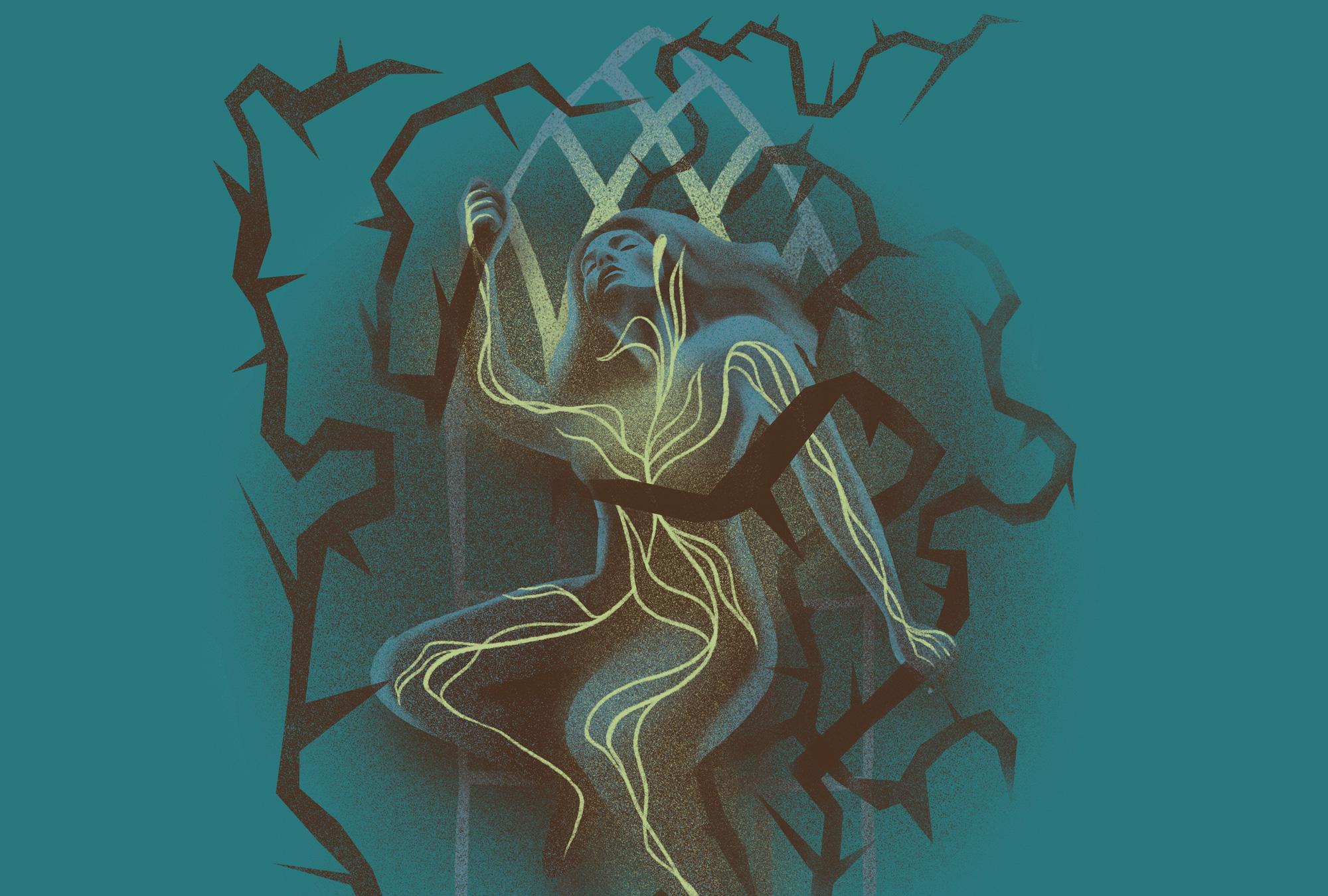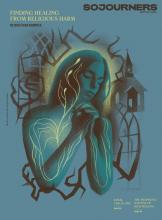Share As A Gift
Share a paywall-free link to this article.
This feature is only available for subscribers.
Start your subscription for as low as $4.95. Already a subscriber?

Illustration by Ryan McQuade
THE FIRST TIME I became conscious that I was carrying the effects of religious trauma, I had just moved to Seattle and was sitting in a church, sweating.
My heart was beating fast; I couldn’t understand what was happening. This church, one I had chosen expressly because of its progressive, LGBTQ+ affirming stance, was supposed to be safe for someone like me, a queer person who deeply valued my faith. But I didn’t feel safe. I looked at the faces in the room with suspicion, searching for any indication of a bait-and-switch, and left the building quickly once the service was over.
Despite what I knew about the church — they welcomed LGBTQ+ people at any level of leadership, were committed to anti-racism work, and weren’t afraid of doubt or theological exploration — my body told me another story. As I sat in the cold folding chair, I tried to reason with myself, repeating these facts to calm down. But I didn’t feel calmer; I felt worse. I sat on my hands, legs shaking, as I waited for the service to end.
Because I had moved to Seattle to work on a master’s degree in counseling psychology from an institution that specialized in trauma, I soon learned what had happened: In that moment, my body had experienced the effects of trauma. Even though I cognitively knew the church was supposed to be safe, my body couldn’t discern this church from all the churches I had been in before — churches filled with people who weren’t afraid to tell me I needed to become straight for God to save me from hell. My body was sending warning signs: Be careful, environments like this aren’t safe. Despite the years of work I had done to detach myself from the rigid belief system of my youth, despite the ways I had fought to find a more life-giving approach to theology, I was beginning to reckon with the reality that changing my beliefs didn’t mean I had healed from the environments in which I was raised.
Now, years later, I see more people waking up to the realities of lingering religious trauma. When I scroll through my streaming apps, I see documentaries such as Shiny Happy People, Pray Away, and Hillsong: A Megachurch Exposed that detail different forms of religious harm. I think this growing awareness of religious trauma is part of the driving force behind “deconstruction,” a buzzword that describes the process of reevaluating, changing, and sometimes abandoning one’s beliefs. But what I don’t see as often on Netflix — or on podcasts or on social media or at church — is honest talk about the process of healing. And as someone who now works as a therapist helping survivors of religious harm find healing, I know there is a lot more to say.

Got something to say about what you're reading? We value your feedback!